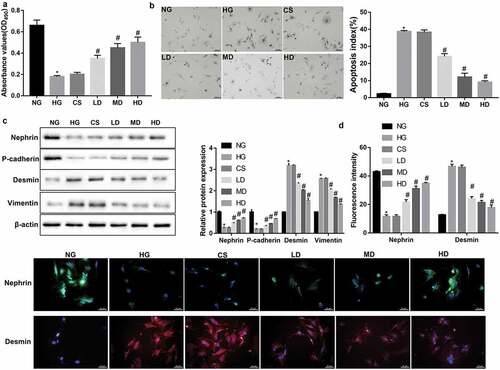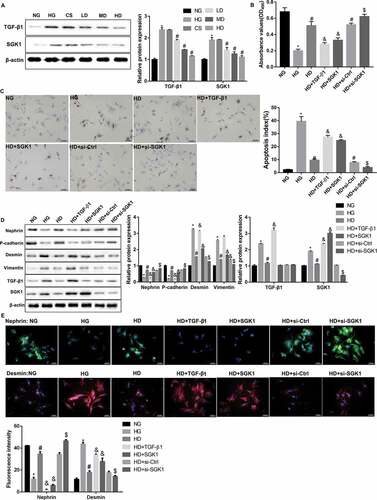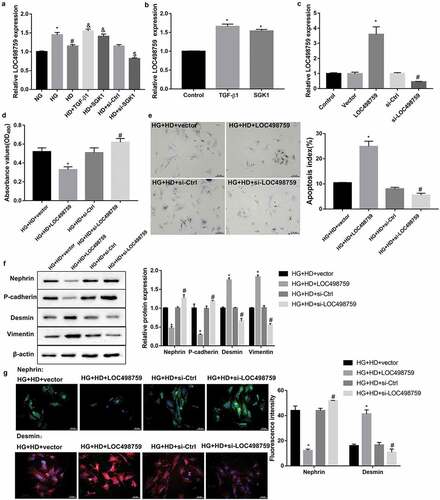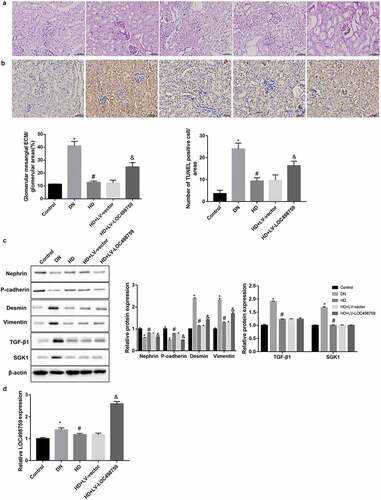Figures & data
Figure 1. Effect of sera from the Jixuepaidu Tang-1-treated mice on the viability, apoptosis, and EMT process in HG-treated podocytes

Figure 2. Jixuepaidu Tang-1 sera inhibited the HG-induced podocyte injury and EMT through blocking the TGF-β1/SGK1 signaling

Figure 3. LOC498759 was involved in the Jixuepaidu Tang-1 sera-mediated inhibition of the HG-induced podocyte injury and EMT

Table 1. Metabolic data of mice at the end of the experiment (mean ± SD)
Figure 4. LOC498759 was involved in the Jixuepaidu Tang-1-mediated renal protection in DN mice

